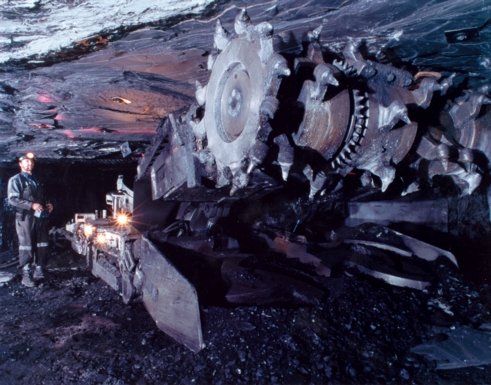
Continuous Mining

In underground mining, first and foremost in the modernization process are the
machines that extract coal: primarily the continuous and longwall miners.
First introduced in the late 1940's, continuous miners provided a
quantum leap in the speed and efficiency of extracting coal. Modern versions
operate on basically the same principal as their predecessors using a large
rotating steel drum equipped with tungsten carbide steel "teeth" or cutting
bits to cut the coal. Continuous mining currently accounts for about 49% of
total U.S. underground coal production each year.
Standard continuous miners can extract coal at a rate of up to 38 tons a
minute depending upon the seam thickness. New, more powerful continuous miners
are highly productive and are remotely controlled being designed for a variety
of seams and mining conditions. These make possible even fuller recovery of the
available coal, while removing the machine operator further from the working
area.
Continuous miners operate a room and pillar mining system. A series of 18
to 20 foot wide rooms are driven in the coalbed with pillars or columns of coal
left standing to help support the roof. Roof bolts, typically four to six feet
long steel bolts, are inserted into holes bored into the roof to bind the strata
together support the roof.
Robotic continuous miners are now being developed for more automatic operations. These offer a vision of what could become the standard coal mining method of the not too distant future: "Intelligent" mining machines completely controlled by computers, with sensors that pinpoint the positions of all moveable parts, and onboard control systems that run the equipment and collect data on the coal seam. A robotic miner would have its own navigation and guidance systems, as well as internal diagnostics to spot problems and video equipment to allow continuous monitoring of the mining operation by highly trained personnel located in a safe position either underground or on the surface.